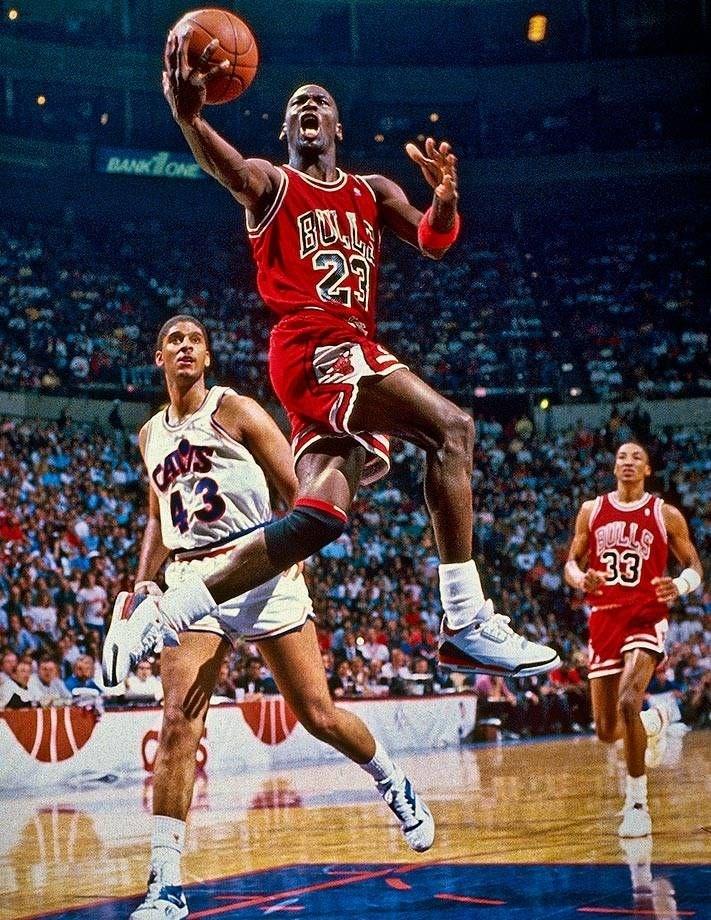




Answer: Thinlyslicedpork!
Not to be confused with BaCoN, the student-led science magazine. This issue aims to continue with the new structure, while adding some variety.
New items this year include a ‘Top 5’ and a correct crossword. There’s even a page full of science, sport, and bacon jokes!
We sincerely hope that you, the reader, enjoy this edition of BaCoN.

— The BaCoN team




In this article, you will learn about:
· The science behind a forceful punch
· Impulse and momentum
· “The snap” and what the “kinetic chain” is
A recent study found that the force of a punch is around 2500N in amateur boxers. How is this possible?

The force of a punch is dependent on the impulse-momentum relationship of your body. Impulse is force times time, therefore meaning that the faster you produce force the more impulse there is: the more power there is in your punch. On the other side, momentum is mass times velocity, or in other words moving mass quickly. We can improve this by speed, strength, acceleration and increasing your mass so people usually gain weight or get stronger and faster.
To have an effective punch you will need the ‘snap’ at the end of your punch. It is a second pulse in muscle activation at the end range of punches, timed upon impact of the punch. More force will be produced in a short amount of time when impacting the body, caused by the brief stiffening upon impact, in the arm, shoulders and core.
The maximum power can be created when a lot of momentum is produced and the snap on impact is involved to produce greater force on impact. How this concept works is that if you manage to generate a high amount of impulse (force x time) you will be able to transfer that to the target site and create momentum, as impulse is the change in momentum.
During a punch, force is generated from the floor and transferred from foot to fist via the kinetic chain. To deliver hard, fast punches, the lower body must produce a large force extremely quickly. The core and hip muscles must be strong enough to transfer this force through the mid-section and to the shoulders and then arms, which must be mobile enough to efficiently deliver the fist towards the target.
Tightness, weakness, or dysfunction at various parts of the kinetic chain can negatively affect force transmission and can also increase the risk of injury as other areas are forced super-compensate.



Whether you’re sent flying from a well struck punch or knocked out from the knee of an opposition player during a poorly timed tackle, we all know one thing - knockouts are bad. But how bad are they, and why are they bad?

The brain is an extremely fragile organ, made almost entirely from nerves and blood vessels. It a mushy, soft mass of tissue which controls all higher neural functions, and commands the actions you make as a human. Despite its squishy build, it is remarkably resilient when receiving trauma. Research shows that blackouts or “knockouts” act as a defence mechanism to protect the brain, and can help the brain stay in a healthier state - at least compared to one that didn’t black out.
The brain is suspended in a colourless, clear liquid called ‘cerebrospinal fluid’, protecting the brain from meeting the skull. If the knock is hard enough, the brain will collide with the skull. This is due to rapid acceleration (caused by the blow) followed by rapid deceleration as muscles in the neck rapidly contract to ‘lock’ the head in place. But what causes the blackout?
When the brain collides with the skull, trauma is induced - brain cells immediately start dying due to the physical impact. This causes a large number of neurotransmitters to fire simultaneously, causing a nervous system overload which induces a system crash in the brain (a temporary paralysis), hence a blackout occurs.
A reflex area situated in the brain, named the ‘sinus’, regulates the flow of oxygen and blood to the brain. However, a strong knock can jolt the sinus, deforming it for a small period of time. This means it doesn’t regulate blood to the brain - hence a period of blackout as the brain is starved of oxygen.
Judging from the severity of the blow you can blackout for seconds, minutes, hours, or even days. Repercussions range from mild headaches to more serious symptoms, like cerebral bleeding, and even death.
Have you ever dreamed of being a published writer? Interested in science? Want to flaunt your enormous brain all around college? Look no further. BaCoN is
Altitude training is depriving your body from oxygen whilst doing a physical activity - usually running or cycling. Athletes use altitude training to increase their chances of winning during their sporting event. But what does altitude training do? Altitude training increases your red blood cell production in your body. This means that they can carry more oxygen around to the working muscles. Along with this, it can also improve your maximal oxygen intake, also known as VO₂ max (VO₂ is the maximum rate of oxygen your body is able to use during exercise). So how does this help with sports? Increasing your red blood cell production, and oxygen intake, can increase the available energy for the working muscles. This, therefore, helps maximize the performance of the muscles, making them tire and fatigue less easily.
 - Josh (Bn)
- Josh (Bn)
for you. All you need to do is email us at baconmagazine@wellingtoncollege.org.uk. And we will tell you the theme for the magazine. Then, you can write to your heart’s content.
Is it possible to train fast twitch muscles? To understand whether it is possible to train fast twitch muscles we must first understand what they are. Muscles are made of fibres. Fibres can be separated into two categories - slow (type 1) and fast (type 2) twitch. The word ‘twitch’ simply refers to the number of contractions a muscle does during activity. Fast twitch muscles can generate a much larger and quicker force comparatively – while having relatively low stamina due to high inefficiency. Certain exercises train specific muscles or muscle groups - for an athlete who wants explosiveness, they can use box jumps, kettle bells swings and squat jumps. However, certain individuals have a variation in the ACTN3 gene. The most explosive athletes have this genetic variation, giving it the name ‘the gene for speed’.
 - Casi (Bn)
- Casi (Bn)

Michael won gold in the following swimming races:
· 400 m medley
· 200 m freestyle
· 100m butterfly
· 200m butterfly
· 200m medley
·
4x100m freestyle
· 4x200m freestyle
· 4x100m medley
On March the 2nd, 1962 Wilt claimed this immense record after scoring 100 points during a win over the New York Knicks, playing for the Philadelphia Warriors. The next best to this record is Kobe who scored 81 points in 2006. This record is set to stand for a very, very long time.

The 1976-77 season for the Tampa Bay Buccaneers was not their most fruitful. When the season came to a finish their record wasn’t looking too impressive with 26 losses, 2 wins and no draws. The second closest to this impressive run was the Detroit lions in 2008/9 with a staggering 19 consecutive losses.

In the dark ages back in 1945, Byron Nelson won 18 of the 35 PGA tour events, including a stretch of 11 consecutive wins. These records stand to this day and experts have little to no faith that anyone will beat this.

“Big Red” entered the starting gates at Belmont Park on June 9, 1973, alongside four other horses adjacent to him, however they were not this close at the final as Secretariat finished 31 lengths ahead of his closest competitor, a record topping the previous one of 25 lengths. In this flurry of success another record was set- the fastest mile and a half on dirt, with a time of 2:24.

Douglas Adams once said:
"It's not the fall that kills you, it's the sudden stop at the end,"
The main danger of crashes in Formula 1 is the very sudden deceleration. Most humans can't handle over 9 g's of force (Where 1 g is the acceleration due to gravity on Earth). Because of this, most of the safety systems in F1 revolve around reducing the acceleration felt by the driver.

During a collision, momentum is conserved, meaning that the energy of a Formula 1 car is transferred into the barriers; because of this, most barriers need to have some "give" to them, so they don't result in an instantaneous stop (shown above). This is similar to the difference between punching a pillow and punching a concrete wall.
As the time taken for the car to come to a complete stop increases, the acceleration experienced by the driver decreases, resulting in a safer crash. Therefore, most safety equipment in Formula 1 is designed to increase the time taken to come to a complete stop. This includes Crash Barriers, helmets, the HANS device, and the "crumple zone" of the car.

Different types of crash barriers are more effective in different parts of the track; for example, at a high -speed corner gravel traps can be used to slow the car down, decreasing the energy exerted on the driver when the car eventually hits the wall.
‘Tec pro’ barriers are specially designed tessellating (repeating pattern) barriers that comprise a red absorbent foam block that absorbs energy very efficiently, and a stronger grey reinforced block to prevent cars from penetrating the barrier and injuring spectators. The tessellations help the Tec pro Barriers help to spread the impact out over the entire barrier, as opposed to just a small section of the wall.
On a long straight, concrete barriers and guard rales can be used as. Despite being terrible at absorbing the impact from a head effective at deflecting the cars so that they run parallel to the barrier and are slowed down by friction. As concrete walls are better at shallow angle crashes, where the car is colliding with the barrier is close to parallel with the barrier; concrete walls are often much closer to the edge of the track so that the car has less time to turn to face the barrier head-on.
Overall safety is an incredibly important consideration around the world of Formula One. For example, despite its initial controversies, the HALO has displayed its importance a multitude of times since its creation, most notably during Romain Grosjean's crash in Bahrain 2020. Crash barriers help to protect both drivers and spectators, and are therefore essential technology for the continuation of the sport.



It has been shown in many studies that testosterone greatly improves physical performance. In a recent study, published in the guardian showed that trans women performed much better athletically on average than their biological counterparts, doing 31% more pushups in one minute, 15% more sit-ups in one minute and running 1.5 miles 21% faster. This phenomenon was already widely observed and known. However, what was surprising was that even after 2 years of suppressing testosterone levels (a year longer than IOC guidelines), the trans women were still 12% faster on average than biological females.

This proves the already existing hypothesis that many of the physical performance benefits due to testosterone arise early in adolescence. When biological males reach the age of 13-14, their physical attributes start to change. These changes affect many cells, tissues, organs and even systems in the body. These changes include increased muscle mass, increased bone density, greater bone and skeleton length, increased lung capacity and increased hemoglobin levels. Each of these gives males a slight physical advantage over females, but together these factors make for a rather large competitive advantage, to the point where professional sports competitions between men and women becomes unfair.
In sports, categories are often made and restrictions put in place to ensure meaningful competition. There are biological advantages seen in players of some sports. Nevertheless, they compete in the same category as people without such an advantage. The most prominent example is fencing. In fencing, being left-handed is seen as highly advantageous with 40% of elite fencers being lefthanded, as opposed to only 10% of the population being left-handed. Despite this advantage, left and right-handed fencers still engage in meaningful competition, with the most recent 2022 World Fencing Championship individual epee category being won by Romain Cannone, a right-handed fencer.
Nevertheless, there are also examples of physical advantages in sports which do not allow for meaningful competition. For example, in boxing and mixed martial arts, there are different weight classes in place to prevent lighter athletes from fighting heavier athletes. These categories are in place because no matter how hard a fighter trains, if they are significantly lighter/smaller than their opponent their chances of winning are slim. This is not meaningful competition as the bigger fighter will likely win and there is little to no point for the match to take place.

To what extent is the participation of transgender athletes in sports unfair to female competitors?
Some have argued that there should be a separate category for transgender athletes to ensure fairer competition. The main problem with such a solution is that 99% of all athletes are either biologically male or biologically female, with transgender athletes comprising only 1% of all athletes. Such a small proportion of transgender athletes would make it difficult to create and maintain a separate category as it would be hard to assemble enough teams and host enough competitions for the endeavor to be profitable. One may say that inclusivity matter more than profit, however, we must remember that money makes the world go round and these are professional athletes in discussion. Neither the athletes nor the organizers will be willing to create a new branch of sports if there isn’t sufficient money in the field.
Some experts argue that the point of a separate category for women in sports is to exclude male advantages due to testosterone. If one were to agree with that being the case, then transgender female athletes should not be allowed to compete in the women’s category. Scientific evidence suggests there are advantages due to testosterone retained in trans women, and there is a significant difference in performance due to these advantages.


The field of transgender athletes is still in its infancy and the science behind it is not set in stone. It is very possible that in a few years’ time, more scientific evidence will be discovered disproving this hypothesis or new procedures will be created to mitigate the retained advantage in transgender female athletes. At that point policies will have to be reviewed, and actions will have to be taken to ensure maximum inclusivity and fairness in sports. At the moment, the International Olympics Committee has refused to restrict transgender athletes before it is concretely proven that they retain a significant advantage. Many experts have said that it should have been done the other way around, excluding transgender female athletes from competing in the women’s category at a professional level, before it is proven that the retained advantages are insignificant.
In conclusion, the participation of transgender women in women’s sport categories is unfair to their biological opponents due to their retained testosterone advantages. However, the field and discussion of transgender athletes is still very new, with too little evidence existing for concrete conclusions. It is likely that in the future more evidence will arise, and more solid conclusions will be made, allowing for fairer and more inclusive competition in sports. Until then, it is fair to say that it is unfair for transgender women to compete in women’s sport.
So, is meaningful competition possible, or is there a need for a separate category for transgender athletes?

Due to the amount of downforce a Formula 1 Car produces, people have often said that an F1 car could drive upside-down, but is it actually possible?
Formula 1 cars are capable of generating 3.5g of lateral cornering force due to their aerodynamics. This means at high-speeds, an F1 car could support three and a half times its own weight. They do this by directing air over ‘wings’. Comparing an airplane wing to a Formula 1 wing:
The airplane wing creates fast moving air on top and slow moving air on the bottom of the wing. The F1 wing creates slow moving air on the top of the wing and fast moving air on the bottom. Bernoulli’s principle states that fast moving air has relatively low pressure, and slow moving air has relatively high pressure. The difference in pressure around both wings causes a force. In the case of the airplane wing, this force acts upwards, whereas the force acts downwards on the F1 wing.


However, Formula One cars utilise a "dry slump" engine this means that being upsidedown the engine would be at risk of oil starvation, this however could be easily fixed with a few tweaks.
An F1 car only produces the incredible downforce when it is operating at high speeds, this would mean that the car would either need to start on the ground and then slowly drive up a banked wall onto the ceiling, or start already travelling at 180mph, both of which are implausible.
Overall, although an F1 car could theoretically drive upside-down it would be almost impossible to actually recreate, as well as costing a small fortune for the engine modifications and tunnel necessary.
Why should you never date tennis players?

Love means nothing to them.
Why did the pig run naked across the football field? He was streaky bacon.
What do you do with a sick chemist?

Well, if you cant helium or curium, you might as well barium!
Why did the two red blood cells break up? Because their romance was all in vein.
Why cant you trust an atom? Because they make everything up.
By Josh (Bn) and Sam (Bn)
Proofed by Jess (Hp)

Name: Cyrano
Height: 5' 9” / 5’10”
Star sign: Leo
Favourite colour: Light Blue
Favourite quote: “People say nothing is impossible, but I do nothing every day.”
Favourite poet: William Shakespeare
Favourite sport: Rugby
Favourite pro athlete: Steph Curry
Goals for the Future?: Pass my IB and go to Uni

Favourite number of the alphabet: Pineapple
What do you call your haircut?:
Beep Boop
Favourite song: Annie are you okay?
Favourite band: Nirvana
Autumn leaves, Oh autumn leaves I'm on my knees, I'm begging, Please

You beguile me, bewildered, we betrothed, You enchant me, endarkened, we engaged, Being a budding boy I was blind of your beast, Expecting eternal emotion, an everlasting entity.
Used and abused, torn and twisted, Your subverted fantasy, I was your puppet, An opportunity, financial and physical, Take me off your leash, I am not your pet! Your pure evil tricked me, magical.
I'm on my knees, I'm begging, Please
Your plastic love, I was the innocent dove
Happy now? Are you? Now you have my money And my heart too. This isn't funny.
Autumn leaves, Oh autumn leaves I'm on my knees, I NEED YOU! Please.
Through the murky darkness of the smog-filled night sky, a single light pierced through the desolate street. In the corner of his office, a lamp stood steadfastly by the window, slightly ajar to allow a brisk breeze to dance through the crack. Jonathan sat in his chair, a curious smoke casting a dark haze across the room. The remains of his cigar smouldering in an ashtray, a dry, mischievous smile grew on his face as his cheekbones pulled tight. Everything had unfolded as planned; an immeasurable wave of content overcame him. The first stage was complete. With newfound confidence, he grasped his pen, unscrewed the lid, and lifted ink to the nib. He sat back in his chair and began to write, the next chapter to unfold.
It falls from the sky But not in Dubai
Through window I spy
A quite mouse with smile wry
A dark tinge to his wide eye (He has only one eye)
Sways does the white powder
Trees and flowers the powder encounter
Name: Jonathan
Height: 5' 12"

Star Sign: Capricorn (In hindsight I am far more an Aquarius)
Favourite Sport: Fly Fishing, Bird Watching & Poetry

Favourite song: Glock on my lap (21 Savage)
Favourite Colour: Cichlid Violet
Favourite question: 'Doing much this weekend?'
Someone who inspired me: Sherlock Holmes, Oscar Wilde
Pet Peeve: Corked Bottle of Wine (visibly cringed while saying)
Naughty habits: Definitely my pastime, Descriptive Writing. I can often be found sneaking a way to my office to stimulate my creative urge.
Any Pets?: Yes.
Favourite Piece of Literature: Summer on the Lakes, in 1843 (Margaret Fuller)
Growing cold hunger, I want hot chowder
The falling flour lasts much longer than an hour Slowly it makes the children laugh LOUDER.
The children innocently frolic
The crowds flow through the streets, like pollock. Lorries of labourer's clear the road, hydraulic. Nights grow dark, children drink eggnog (nonalcoholic)
The families sing together, it feels symbolic.
Meet the EditorsFollowing the wild success of the BaCoN 2022 summer edition, Adam has been given the nickname “Big BaCoN”. After his awakening in the wilderness, he decided to write a poem encapsulating the thoughts and feelings he experienced, titled “Home”:

In the wilderness, I roam free Amidst the trees and the babbling brook I feel alive and wild, like a true beast.
The wind blows through my hair As I climb the rocky peak I am untamed, a force to be reckoned with.
The sun beats down on my face But I do not falter, I stand strong. I am one with nature, a part of the land.

As the night falls, I make my camp Beneath the stars and the glowing moon I am at peace, surrounded by the beauty of the wild.
In the wilderness, I am free. No rules or constraints, just me. I revel in the freedom and the solitude.
For in the wilderness, I am home.
Despite his busy schedule and sporadic lifestyle, we managed to pin Adam down while he was studying unreleased works of the late Aristotle. He refused to provide further details and agreed to answer a few short questions:
Name: Adam House: Benson Height: 6’1”
Date of Birth: ???
Nationality: 75% English, 25% unknown
Favourite film: La La Land
Favourite colour: Mauve Vertical leap (in.): 39
Resting heart rate (BPM): 27
Favourite subject: Environmental studies
Favourite date: 24th April
Longest finger: Right ring
Favourite moon: The moon
Highest score: 847

